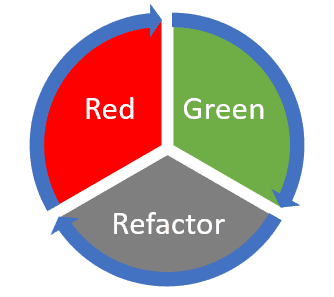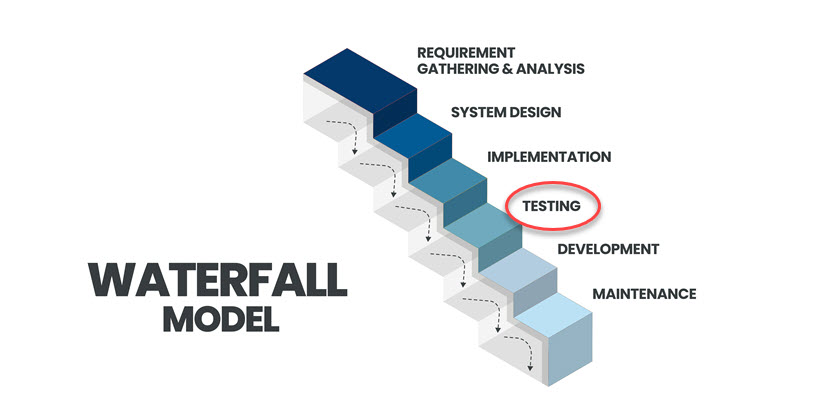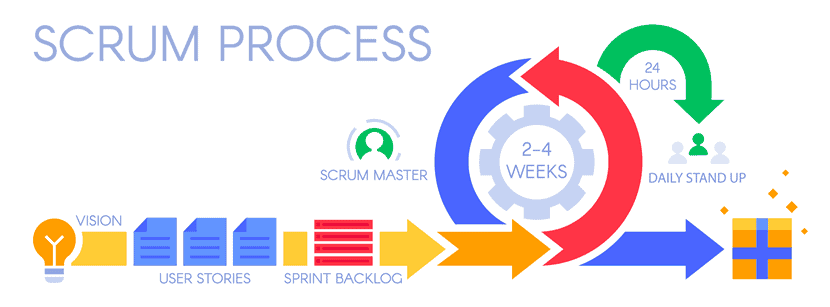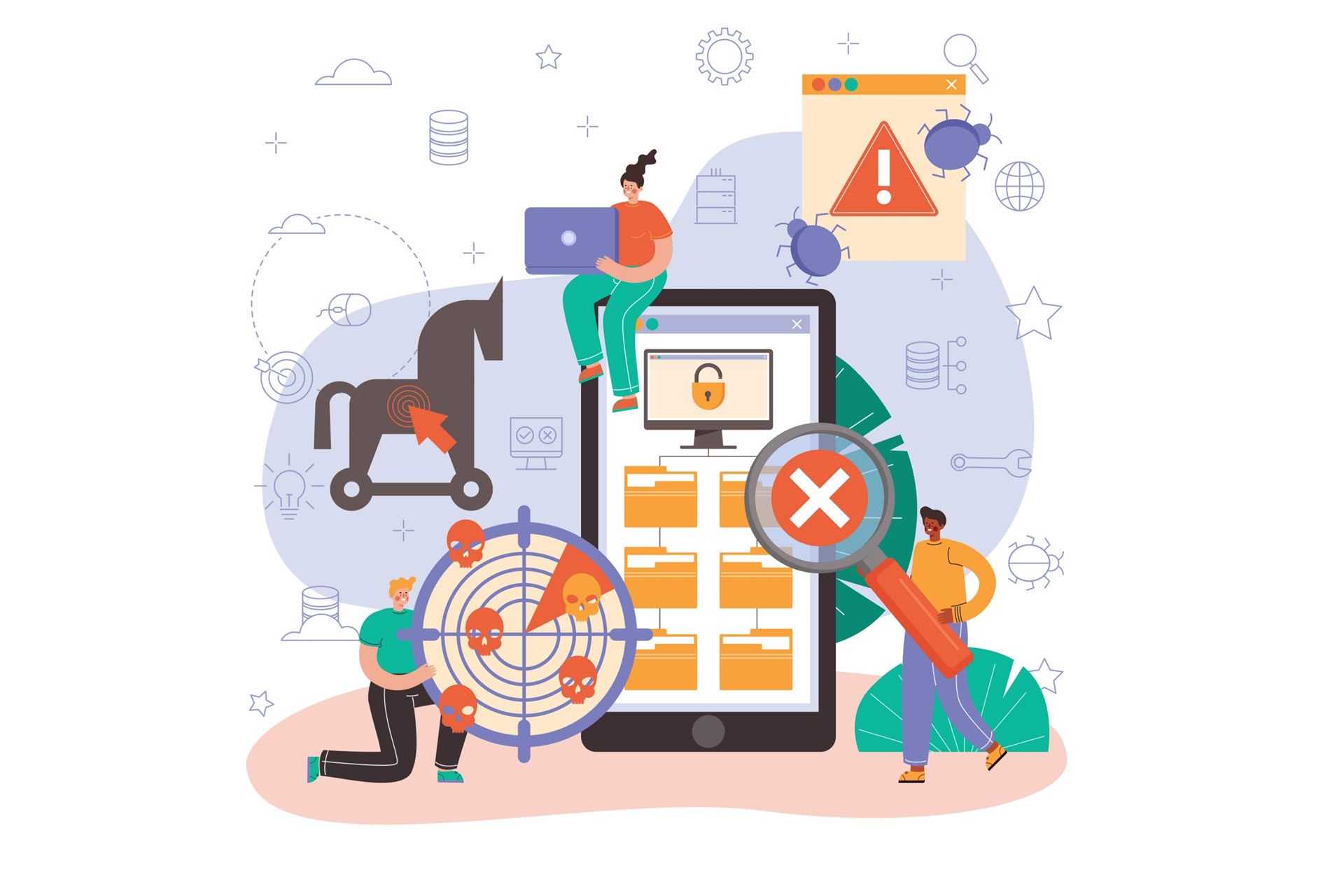Test-Driven Development (TDD) and Behavior-Driven Development (BDD) are development methodologies that enhance software reliability and quality. Both approaches guide developers through the process of writing and testing code, but they focus on slightly different aspects of software development. Understanding the nuances will help you choose the right approach for your projects.
This article compares TDD and BDD, explaining their core principles, advantages, disadvantages, and use cases.

What Is Test-driven Development (TDD)?
Test-driven development emphasizes the creation and execution of automated tests before the development of the actual software code. This methodology revolves around a short, repeatable development cycle to ensure the codebase remains error-free and robust.
TDD operates under a simple but strict mantra: "Red, Green, Refactor." This cycle involves the following steps:
- Red: Write a Failing Test. The first step in TDD is to write a test that defines a desired improvement or new function. This test should initially fail because the feature it is testing does not yet exist.
- Green: Make the Test Pass. Once the failing test is in place, the next step is to write the minimal code necessary to pass the test. This step often requires just enough implementation to fulfill the test's requirements without concern about perfect design or optimization.
- Refactor: Improve the Code. With the test now passing, the code is then refactored. This step may involve reorganizing the code, removing duplication, and making other improvements to ensure the code is clean, efficient, and well-structured. Notably, the functionality, as defined by the tests, should not change during refactoring.

TDD Features
Test-driven development (TDD) is structured around several fundamental principles that guide the coding and testing process:
- Test first approach. This principle requires that before developers write any functional code, they must first write an automated test for the new feature or functionality they intend to implement. This test initially fails (the "Red" phase in TDD), which is expected since the corresponding functionality does not yet exist. Writing tests first ensures that development efforts are focused solely on passing the tests with the minimum code necessary, avoiding over-engineering, and keeping the codebase simple and clean.
- Short development cycles. TDD emphasizes short, manageable cycles of development, often referred to as iterations. Each cycle involves writing a test, passing it, and refactoring, allowing developers to focus on small, incremental changes. The benefit is twofold: it minimizes the risk associated with changes by isolating them into small, controllable portions and allows for continuous improvement in code functionality and structure. Short cycles also enable developers to adapt to changes in requirements or design decisions, as the impact of each change is confined to a small project segment.
- Refactoring. Refactoring involves improving the internal structure of the code without changing its external behavior. This process simplifies algorithms, removes duplicate code, and renames variables for clarity. Regular refactoring helps avoid technical debt and ensures that the code remains easy to understand, modify, and extend. Importantly, because tests cover functionality, developers can refactor with confidence, knowing that they'll be alerted if a change inadvertently alters the correct behavior of the code.
- Immediate feedback. The principle of immediate feedback allows TDD to create high-quality software. As developers write tests and the corresponding code, they run them frequently—often several times an hour. This process provides them with continuous, immediate feedback on how their changes affect the existing codebase. Immediate feedback is critical for catching issues early in development, significantly reducing the debugging and troubleshooting time typically required later in the project lifecycle.
TDD Advantages
The goal of TDD is to write cleaner, bug-free code from the outset. This leads to several key outcomes:
- Robustness. Developers ensure the codebase's robustness by writing tests covering each function before implementation. Each new feature starts by meeting the documented expectations, which guards against future changes that could break existing functionality.
- Fewer bugs. Since TDD requires tests for every new feature before it is implemented, it greatly reduces the likelihood of bugs in the code as tests catch regressions and errors early in the development cycle.
- Better design decisions. TDD encourages developers to consider structuring their code to make it testable, often leading to better overall design. By focusing on the requirements one at a time, developers are also encouraged to build modular, decoupled systems.
- Documentation. Automated tests serve as live documentation for the code. They explain what the code does more clearly and concisely than traditional documentation, as they must be updated alongside the code to remain passing.
TDD Disadvantages
Here are the challenges of test-driven development:
- Upfront design requirement. TDD requires developers to consider their application's design at the start, promoting a well-thought-out architecture but demanding more initial planning and time.
- Learning curve and development pace. The TDD cycle can initially slow development as developers adapt to writing tests before the code.
- Discipline in test writing. Successful TDD demands a high level of discipline and a deep understanding of how to accurately write meaningful tests that reflect user needs and system requirements.
- Potential for overengineering. Balancing the depth and breadth of testing without overcomplicating the test suite is a key challenge in TDD. Developers might spend excessive time designing tests for unlikely scenarios, diverting resources away from more essential development tasks.
- Integration challenges. Integrating TDD into a software development life cycle can be difficult, especially in large organizations with established workflows. The shift to TDD may require significant changes in team dynamics, project management, and the overall culture.
TDD Use Cases
Here are the cases where the use of TDD is particularly compelling:
- New projects. Starting with TDD can be helpful for a new software development project. TDD establishes a solid foundation by ensuring every feature added to the project has a corresponding test. This practice helps maintain high code quality, and as the project grows, the comprehensive suite of tests developed from the start serves as a safety net, allowing new features to be added and existing ones to be modified or extended.
- Projects with precise requirements. TDD excels in environments where project specifications are well-defined and stable. In these cases, developers can write tests that directly reflect these requirements. The direct alignment between tests and specifications ensures that all functionality meets the predetermined criteria. Writing tests first also helps identify any potential misunderstandings or ambiguities in the requirements early in the development process, allowing for clarification before significant resources are invested. Furthermore, the iterative nature of TDD means that each requirement is systematically addressed, tested, and integrated into the larger project, ensuring comprehensive coverage and implementation.
- Safety-critical systems. TDD is particularly suited for environments where software failures lead to significant harm or cost, such as in medical devices, aerospace, automotive safety systems, and financial systems. The safety and security provided by having a thorough suite of tests means that the software is verified at every stage of its development, significantly reducing the risk of critical bugs or vulnerabilities going undetected. Additionally, in regulated industries, the extensive documentation the tests provide is vital to complying with industry standards and audits.
Unsure which software testing methodologies are right for your project? Our article explores different approaches to ensure high-quality software that meets user needs.

What Is Behavior-Driven Development (BDD)?
Behavior-driven development is a development practice that extends the principles of TDD by focusing more explicitly on software behavioral specification. This approach is fundamentally user-centric, emphasizing the creation of software that meets the business and user requirements by encouraging collaboration and understanding among all stakeholders involved in a project.
BDD aims to shift the focus of software development from merely writing functional code to ensuring that the software behaves exactly as the stakeholders expect. To achieve this, BDD uses simple, domain-specific language to describe the outcomes and behaviors of the system. Stakeholders create these descriptions collaboratively and express them clearly to technical and non-technical participants.
Here is how BDD works in practice:
- Defining behavior. BDD starts with stakeholders, including developers, testers, business analysts, and product owners, collaboratively defining behaviors using a common language. This language simplifies complex software concepts into terms easily understood by everyone involved.
- Writing scenarios. These behaviors are translated into specific, real-world scenarios that describe how the software should behave in various situations. These scenarios are written in a "Given-When-Then" format, which outlines the conditions, the action taken, and the expected outcome. This method, known as “Specification by Example,” helps ensure clarity and completeness in the behavior specification.
- Automating tests. Once scenarios are defined, they are converted into automated tests before any functional code is written. These tests serve as living documentation and a checklist that the software must pass.
- Implementing code. Developers then write code to pass these tests, ensuring the software behaves as agreed upon. This process is often iterative, where failing tests guide the development until all tests pass, confirming that the software meets the defined behaviors.
- Refining and iterating. BDD facilitates continuous feedback and iterations as development progresses, allowing behaviors to be refined and extended based on ongoing discussions among stakeholders. This iterative cycle helps catch misunderstandings and misalignments early, significantly reducing the cost and effort of changes.

BDD Features
Behavior-driven development (BDD) incorporates several distinctive features that streamline communication among project stakeholders:
- Ubiquitous language. BDD introduces a shared, domain-specific language that unifies communication across different teams, including developers, QA engineers, and non-technical stakeholders. This standardized language reduces miscommunication and ensures everyone understands project details and requirements, enhancing overall project coherence.
- Specification by example. BDD defines software behavior using concrete, real-world scenarios. These examples act as precise, actionable specifications for development, allowing teams to visualize how software features should interact with users. This practice aids in developing intuitive and effective software and serves as living documentation.
- Outside-in approach. This method prioritizes user needs and system behaviors over technical specifications. By focusing on user experiences and business goals from the outset, BDD ensures that development efforts are directly aligned with end-user expectations and company objectives, which leads to more relevant and successful software solutions.
- Collaboration. BDD fosters extensive collaboration among all stakeholders, from the initial planning to ongoing development. This inclusive approach ensures that development remains aligned with business objectives and user needs, facilitating a more targeted and effective product development cycle.
BDD Advantages
BDD offers a range of advantages that contribute to a more efficient and effective development process:
- Enhanced communication. Using a common language and the active involvement of stakeholders throughout the development process fosters better understanding and clearer communication across all team members.
- Focus on user experience. BDD ensures software development meets user expectations and needs, resulting in valuable, user-friendly products.
- Fewer misunderstood requirements. Stakeholders' early and continuous involvement helps clarify and solidify requirements, reducing the risk of misunderstandings and ensuring that the final product faithfully meets the intended specifications.
- Continuous feedback. Regular feedback loops with stakeholders throughout the development process enable more accurate and adaptive development, helping teams quickly resolve issues or adjust to changing needs.
BDD Disadvantages
Despite its benefits, BDD also presents several challenges:
- Requires involvement from various teams. Effective BDD implementation demands broad and continuous collaboration, which can be challenging to coordinate and manage, especially in larger or dispersed teams.
- Time-consuming. Writing and maintaining detailed behavior specifications is time-consuming and may slow development.
- Tool dependent. BDD relies heavily on tools for managing and executing behavior specifications, introducing potential dependencies and complexities that need careful management to avoid disrupting the development process. These tools, such as Cucumber, SpecFlow, and Behat, help translate plain language descriptions into executable tests that validate the software's behavior against the specified requirements.
- Possible overhead. The additional layer of behavior specification introduces complexity and overhead. If not properly managed, this can increase project costs and extend timelines, impacting overall project efficiency.
BDD Use Cases
BDD is particularly effective in scenarios where clear understanding and communication are crucial:
- Complex systems involving multiple stakeholders. BDD is ideal for complex projects requiring the integration of multiple perspectives. It ensures that all stakeholders' needs are considered and addressed in the final product.
- User-centric applications. For applications where user satisfaction is critical to business success, BDD helps align the product with user expectations and preferences, enhancing user satisfaction and product viability.
- Projects with evolving requirements. BDD is well-suited to environments where requirements may change over time, providing the flexibility to adapt effectively to new information and user feedback.
- Integration with agile processes. BDD complements agile methodologies, enhancing adaptability and team synergy. It is an excellent choice for teams that use agile frameworks to manage and execute their development processes.
Our article on DevOps vs. Agile unpacks the strengths of each approach to help you choose the right path for your software development.

TDD vs. BDD: Comparison
Here is a detailed comparison table between TDD and BDD, highlighting their distinct aspects.
| Test-Driven Development (TDD) | Behavior-Driven Development (BDD) | |
| Primary focus | Focuses on the implementation of functionality through a test-first approach. | Focuses on collaboration and understanding the behavior of the system from the user's perspective. |
| Language and readability | Utilizes code-specific terminology in test cases. | Employs natural language (often Gherkin) in scenarios, making it accessible to both technical and non-technical team members. |
| Collaboration and communication | Primarily involves developers and testers. | Encourages collaboration among developers, testers, and business stakeholders to define and validate behaviors. |
| Level of abstraction | Concentrates on low-level unit tests to verify individual code units. | Emphasizes higher-level tests simulating user interactions or end-to-end scenarios. |
| Test organization | Organized according to code structure, often following a hierarchical or modular approach. | Organized around user-desired behaviors, generally grouped by specific features or functionalities. |
| Purpose | Aims to ensure code correctness through automated tests. | Promotes a shared understanding and validation of system behavior, improving communication. |
| Development workflow | Involves writing tests before coding the corresponding functionality. | Begins with collaborative scenario definitions, followed by coding. Often incorporates TDD principles within BDD. |
| Test scope | Narrow, focusing on individual code units. | Broad, encompassing multiple units to verify complete system operations. |
| Test case style | Technical and focused on code implementation details. | User-focused, emphasizing behavior and outcomes. |
| Test granularity | Fine-grained, with tests targeting specific code units in isolation. | Coarser-grained, targeting overall system behavior and integration. |
| Iterative refinement and feedback | Iterative code refinement driven by test results and modifications. | Iterative development shaped by ongoing collaboration and feedback on behavior specifications. |

Choosing the Right Development Methodology for Your Project
TDD and BDD are robust frameworks for software development, each with unique benefits and use cases.
TDD is particularly effective in projects where code correctness and reliability are vital. Its test-first approach ensures that every piece of code is backed by tests, leading to fewer bugs and a more maintainable codebase.
On the other hand, BDD extends the principles of TDD by focusing on the system's overall behavior and involving non-technical stakeholders in the development process. This collaborative approach emphasizes the importance of every team member's role, enhancing communication between developers, testers, and business stakeholders. BDD is particularly beneficial for complex projects where understanding user interactions and achieving a common understanding across a diverse team are critical.
The choice between TDD and BDD should be guided by the project's specific needs, the team's workflow, and the desired level of stakeholder involvement. While TDD is centered around technical correctness, BDD aims at broader collaboration and validating user-focused outcomes.
Ultimately, both TDD and BDD aim to enhance development efficiency, reduce misunderstandings, and deliver high-quality software that meets user expectations and business goals. Development teams may find it beneficial to combine elements of both methodologies to leverage their advantages.



